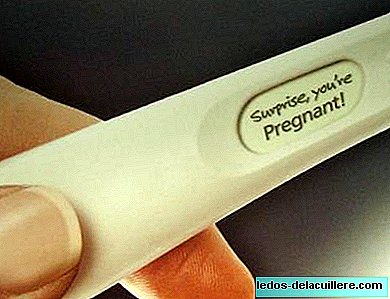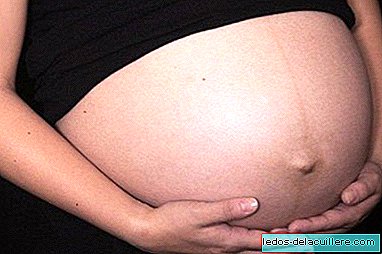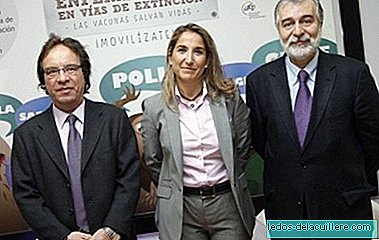
Breast milk contains everything that the baby may need for its growth and development, and presents certain variations in its composition during the last months of pregnancy, and the first days after birth. Therefore we can make a classification among various types of breast milk.
This is because the woman's body is gradually preparing for production that meets the needs of the baby at all times.
Although we know that the composition of milk not only varies at different stages of breastfeeding, but also at different times of the day, from the beginning to the end of the same shot, between women, between the breasts of the same woman and even between each breast lobe
But in general, we can talk about four types of breast milk: preterm milk, colostrum, transitional milk and mature milk.
Preterm Milk
Preterm Milk It occurs in women who have had preterm birth. Mothers who have given birth early produce this type of milk for a long time. Preterm milk contains more protein and less lactose than mature milk, this combination being more appropriate, since the immature child has higher protein requirements. Lactoferrin and IgA are also more abundant in it.
It is essential that premature babies be fed breast milk, as this can prevent many complications and protects the baby from infections, helping the development of his immature system.
However, according to UNICEF, it should be borne in mind that in a very low-weight newborn (less than 1500 grams) the preterm milk does not cover the requirements of calcium and phosphorus and occasionally protein, so it should be supplemented with these elements. The so-called "breast milk fortifiers", which improve growth rates while preserving immunological, metabolic and related benefits, would be added to breastfeeding.
Colostrum
Colostrum is a yellowish liquid rich in protein, fat-soluble vitamins (A, D, K, E) and minerals, precursor to breast milk. Colostrum is secreted by the mammary gland during the last months of pregnancy and the four days following delivery.
Colostrum provides the baby with everything he needs, acting as a mild laxative, preparing the baby's digestive system to receive breast milk or providing the baby with antibodies from the mother that protect against some diseases.

Transitional milk
Transitional milk: it is the milk that is produced between the fifth and tenth day after delivery approximately, has a higher content of fat, lactose and water-soluble vitamins than colostrum and, therefore, supplies more calories to the newborn, adapting to the needs of this as the days go by.
Around the fourth and sixth day, there is a sharp increase in milk secretion, the rise in milk. This intermediate composition milk varies until the mature milk composition is reached.
Mature breast milk
Ripe milk It is secreted by the mammary glands on the tenth day after birth. It is breast milk itself. She alone provides the child with all the nutrients and calories that he requires for normal development and growth during the first six months of life, and is recommended until two years of age or older with complementary feeding.
The main components of milk are: water (88%), proteins, carbohydrates, fats, minerals and vitamins. It also contains trace elements or trace elements, hormones and enzymes.
Breast milk proteins they are 30% casein and 70% whey proteins (alpha-lactalbumin, high biological value for the child, serum albumin, beta-lactoglobulins, immunoglobulins, glycoproteins, lactoferrin, lysozyme, enzymes, growth modulators, hormones and prostaglandins) .
Casein is a vitamin that forms large clots, so its digestion is more difficult; hence, the child digests breast milk more easily, whose casein content is lower than that of cow's milk. Breast milk is low in protein but high in fat and carbohydrates.
The main carbohydrate of milk is lactose, a disaccharide composed of glucose and galactose. Human milk has a high lactose content, 7 g / dl (about 200mM), which is metabolized into glucose and galactose before being absorbed by the intestine.
It provides 40% of the energy, but also has other fundamental functions for the development of the nervous system, for mineral absorption or infection prevention.
Fat is the most variable component of breast milk. At the beginning of the shot, the milk is light and in the end it becomes creamy, since it is 4 to 5 times more concentrated in fat than the first. It is this change in texture that allows the newborn to quench his thirst first and then his appetite.
The concentration of vitamins In human milk it is suitable for the child, although it can vary according to the mother's intake. As for the minerals, the concentration of most of these in human milk (calcium, iron, phosphorus, magnesium, zinc, potassium and fluorine) is not significantly affected by the maternal diet.
Breast milk, in addition to actively protecting the baby's organism (transferring protection against specific infections and allergies), is immunomodulatory, stimulating the development of the infant's own immune system. It also contains many anti-inflammatory and anti-infective components.
As we can see, breast milk, whatever it is, is produced in the stage that is produced, is of great biological complexity and is the best food for the baby, although we know that it can be much more than a food, since the contact between the mother and the baby fulfills important emotional and bonding functions.
In short, all breast milk classes they have the appropriate biochemical characteristics for a specific period of the infant's life.












